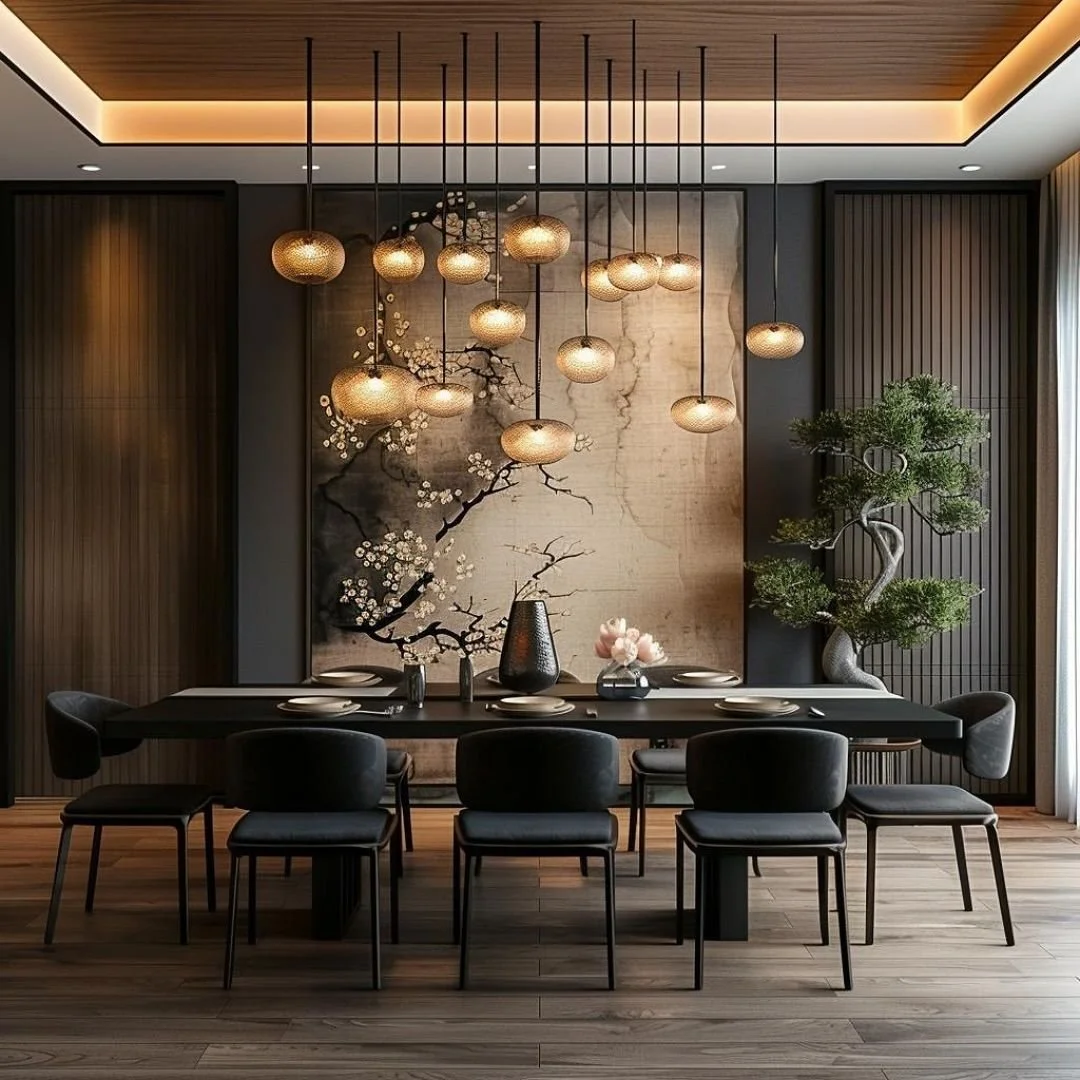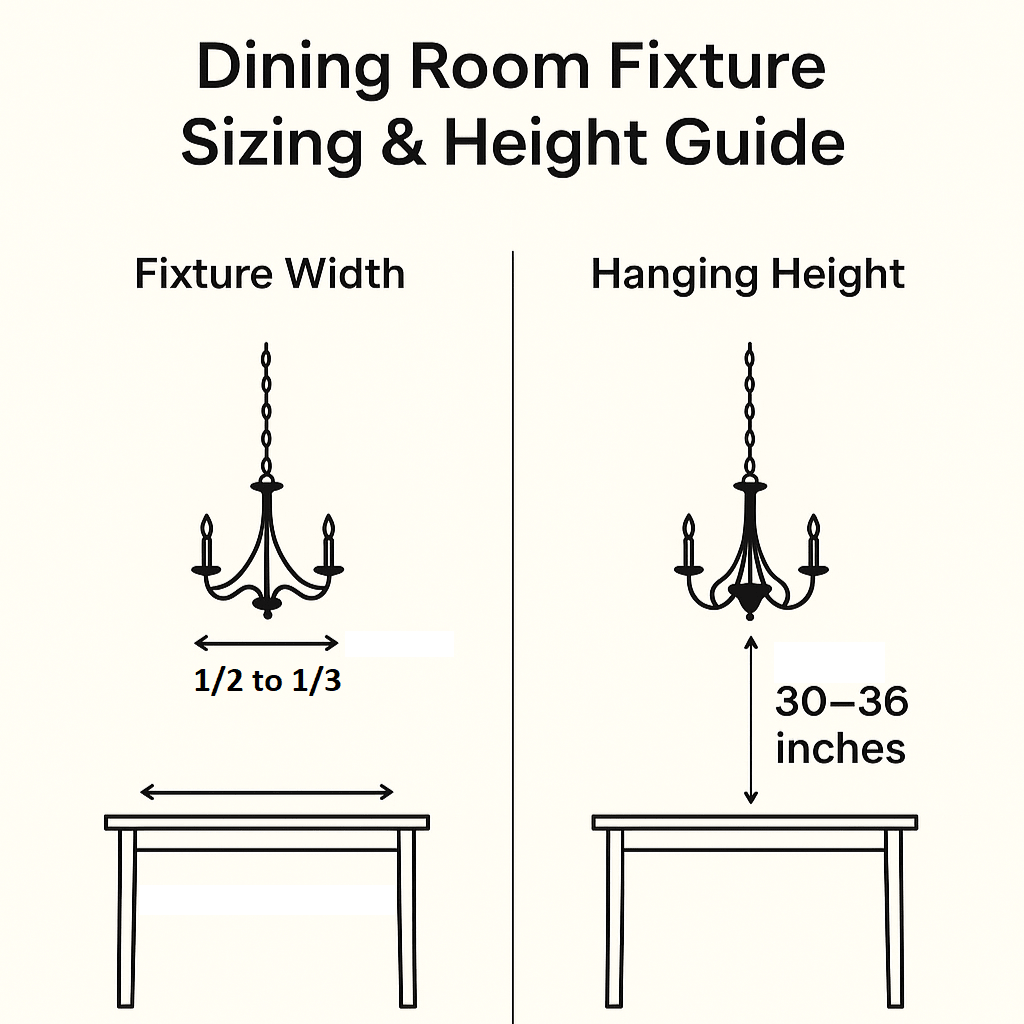Dining Room Lighting Guide: Ideas, Fixtures & Tips
Discover how to choose dining room lighting with expert tips on fixture types, placement, styles & trends.
Your dining room is more than just a place to eat; it's a hub for family gatherings, lively dinner parties, and quiet morning coffees. While furniture and decor set the stage, it's the dining room lighting that truly sets the mood. Done well, it can transform a bland space into a warm, inviting retreat. Done poorly, it can make even the most beautiful room feel cold and unwelcoming.
This ultimate guide will walk you through everything you need to know about dining room lighting, from choosing the right fixtures to understanding placement and mastering style.
1. Fixture Types: Your Lighting Toolkit
The world of dining room lighting fixtures is vast, but each type serves a unique purpose. Understanding the options is the first step to creating a perfectly lit space.
Chandeliers: The classic centerpiece. Chandeliers are designed to make a statement, serving as both a primary light source and a decorative element. They come in countless styles, from traditional crystal to sleek, modern designs. They are best suited for formal dining rooms or spaces with high ceilings.
Pendants: A versatile and popular choice for modern dining room lighting. Pendants are single fixtures suspended from the ceiling by a cord or chain. You can use a single large pendant for a minimalist look or group several smaller ones at varying heights to create a dynamic, sculptural effect. Linear pendants are especially popular over rectangular tables.
Linear Bars/Multi-Light Pendants: These are essentially multiple lights on a single long fixture. Linear dining room lighting is perfect for long, rectangular dining tables, as it provides even light distribution across the entire surface. This prevents dark spots and ensures every diner is well-lit.
Flush Mounts & Semi-Flush Mounts: Ideal for low ceiling dining room lighting. Flush mounts are installed directly against the ceiling, while semi-flush mounts hang down slightly. They provide good general illumination without taking up vertical space, making the room feel more open.
Wall Sconces: Often used as accent lighting, sconces provide a soft, ambient glow. They are perfect for creating a warm, intimate atmosphere and can highlight artwork or architectural features. They should be used in conjunction with a primary light source.
2. The Golden Rules of Size & Scale
Getting the size of your fixture right is crucial. A chandelier that's too small will look lost, while one that's too large can overwhelm the room.
Fixture Width: A good rule of thumb is that the fixture’s width or diameter should be between one-half and two-thirds the width of your dining table. This ensures the light is centered over the table and provides ample illumination without a risk of bumping your head.
Hanging Height: The ideal height for a fixture is typically 30–36 inches above the tabletop. This height provides a good balance, illuminating the table without creating glare in the eyes of diners or obstructing conversation. For very high ceilings, you may need to hang the fixture a bit higher to maintain a sense of proportion.
3. Layering Light: The Secret to a Perfect Ambiance
Professional designers know that great dining room lighting isn’t about a single fixture; it's about a layered approach. By combining different types of light, you can create a flexible, functional, and beautiful space.
Ambient Lighting: This is your main, overall illumination, usually provided by a chandelier, pendant, or flush mount. It provides a foundational layer of light.
Task Lighting: While not as common in a dining room, this can be provided by focused downlights or a very bright pendant over the table, ensuring the food and faces are well-lit.
Accent Lighting: This is used to draw attention to specific elements, like artwork on the walls or a beautiful hutch. Wall sconces or recessed spotlights are perfect for this.
Dimmers: This is a non-negotiable for dining room lighting. A dimmer switch allows you to control the intensity of the light, transitioning from bright and functional for homework to soft and romantic for a dinner party.
4. Style Inspiration: Ideas for Every Aesthetic
Your dining room lighting ideas should complement the overall style of your home.
Modern: Think clean lines, geometric shapes, and a focus on form and function. Materials like polished chrome, black iron, and glass are staples. A linear bar pendant or a multi-light chandelier with an abstract design would fit perfectly.
Farmhouse: Warm, rustic, and inviting. Look for fixtures in wrought iron, wood, or distressed metals. A classic wagon wheel chandelier or a simple metal pendant with an Edison bulb would be a perfect fit.
Coastal: Bright, airy, and relaxed. Natural materials like woven rattan, rope, or whitewashed wood are key. A bead chandelier or a series of simple glass globe pendants can bring a seaside feel to your dining area.
Small Spaces: When space is limited, scale is everything. Avoid oversized, bulky fixtures. A semi-flush mount or a single, streamlined pendant will provide ample light without overwhelming a small dining room.
5. Practical Scenarios & Creative Solutions
What if there’s no overhead lighting? Don’t worry! You can use a swag kit to hang a pendant light from a ceiling hook and plug it into a wall outlet. Floor lamps and wall sconces can also provide sufficient ambient and accent lighting.
Small vs. Open Spaces: In a small dining room, a single fixture is often enough. In an open-concept space, you can use lighting to visually define the dining area. A large statement chandelier or a cluster of pendants can help create a distinct zone.
6. Bulbs & Tech: Brightening Your Space Smartly
The right bulb can make or break your lighting.
Warm, Dimmable LEDs: LED bulbs are energy-efficient and long-lasting. Opt for "warm white" (2700K–3000K) to create a cozy, inviting atmosphere. And as mentioned, make sure they are dimmable.
Smart Lighting: Smart bulbs and switches allow you to control your dining room lighting with your phone or voice assistant. You can change colors, set scenes, or schedule lights to turn on and off, offering ultimate control and convenience.
7. Buying Guide: How to Choose Dining Room Lighting
When you’re ready to buy, what should you look for?
Material Quality: Fixtures come in a wide range of materials. Consider how they will wear over time and if they are easy to clean.
Durability: Ensure the fixture is well-made and will stand the test of time.
Style: Does it complement your existing decor?
Price: Dining room lighting fixtures can range from budget-friendly to high-end. Set a budget before you start shopping.
FAQs
How high to hang a dining room light? A good rule is 30–36 inches above the table, but this can be adjusted based on the height of your ceiling and the size of your fixture.
What is best for low ceilings? Flush mounts, semi-flush mounts, and even recessed lighting are all great options. Look for sleek, minimalist pendants that don’t hang down too far.
Should my foyer and dining room lights match? They don’t have to match perfectly, but they should be in a similar style or have a complementary finish to create a cohesive flow throughout your home.
How to light a dining room without an overhead fixture? Use a combination of wall sconces, floor lamps, and a plug-in swag pendant to create a layered and functional lighting plan.
By following this guide, you can choose and place the perfect dining room lighting to create a space that is not only functional but also beautiful and welcoming for years to come. For more inspiration read our room by room lighting guide!




